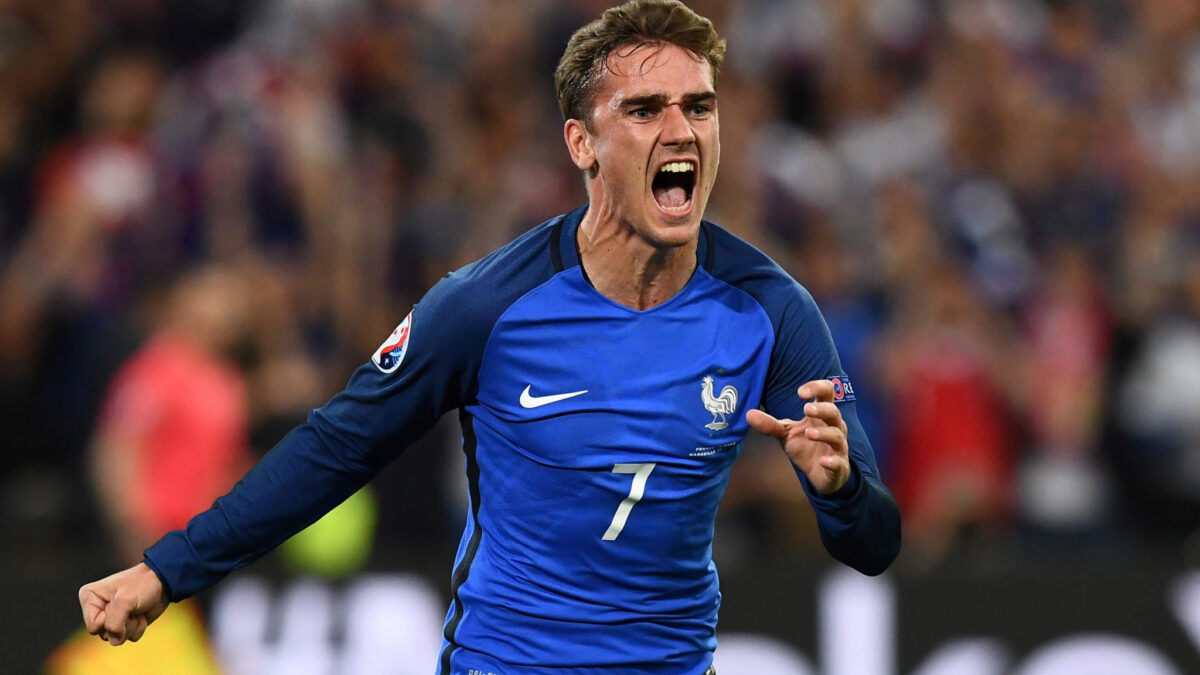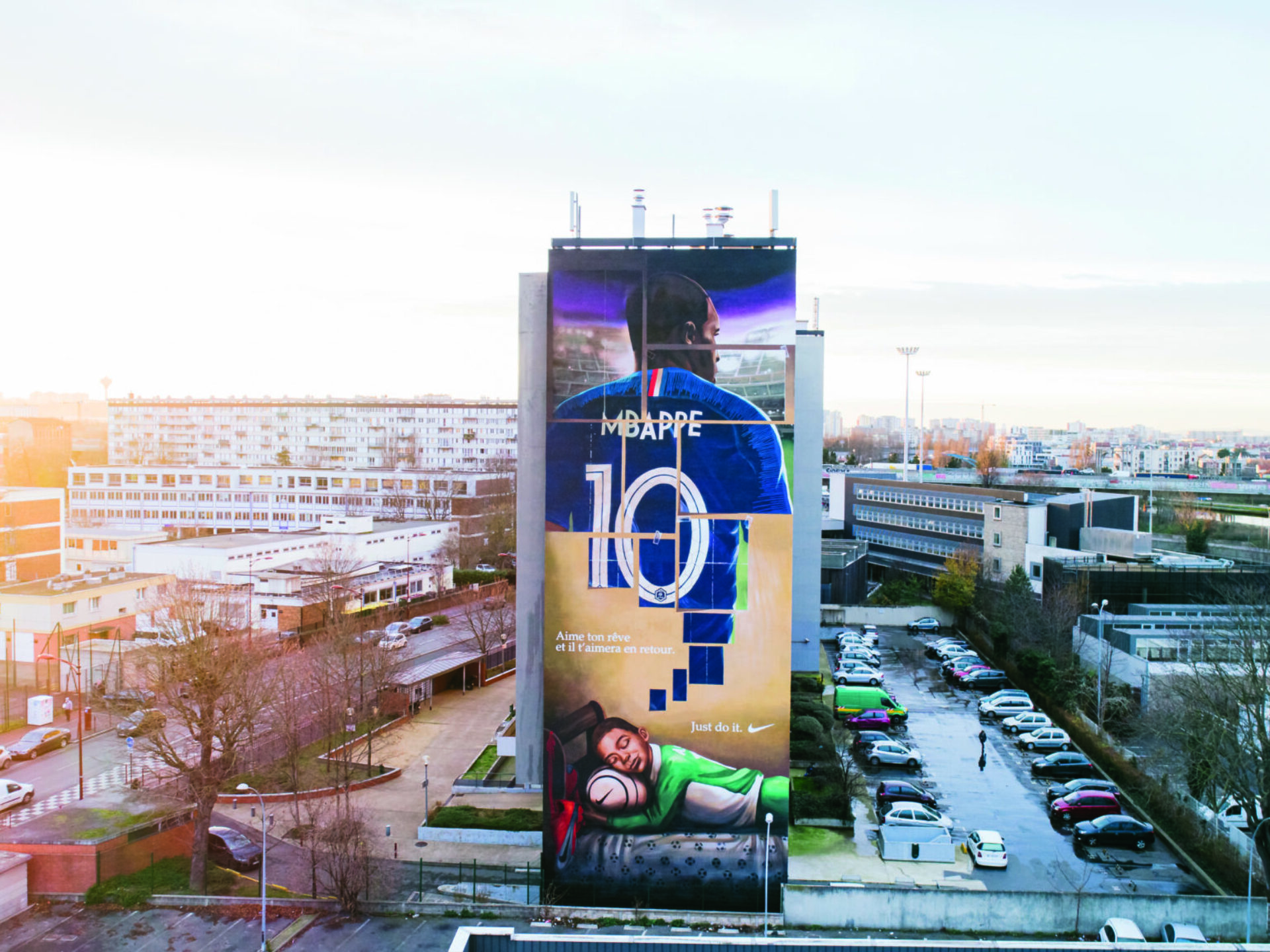Magazine

May 12, 2021

This article was originally published in Populous Magazine, our biannual publication featuring news and trends from the worlds of sport, entertainment, and major public events. Find out more, and sign up to receive a free copy, here.
Born and brought up in a Parisian suburb (or banlieue), Kylian Mbappé is a symbol of France’s aspiring working classes, striving for fame and fortune through sporting success. In advance of the UEFA European Championships, Joe Boyle discovers the person, the player, and the much-loved ambassador who hopes to unite France through soccer.
You can’t miss the mural. It covers the entire side of the housing block, one of many in the Parisian suburb of Bondy. A boy lies in bed, hugging a soccer ball. It’s a young Kylian Mbappé, you realise. He’s dreaming. What is the subject of his dreams, rising in a mosaic above him? It’s himself, now grown up and wearing the No.10 shirt of France. “Aime ton rêve et il t’aimera en retour,” says the mural caption. “Love your dreams and they will love you back.”
It’s a message of hope and possibility, crafted in Nike’s marketing department. But how possible is it for Bondy’s residents to love their dreams into reality? And how might this Parisian suburb and its famous son shape France’s dreams, both on and off the pitch, during the European Football Championship in June and July?
On one level it’s clear. Mbappé will illuminate this summer’s tournament. Aged just 22, he has four league titles to his name and is already a World Cup winner, unlike Messi, Ronaldo and Neymar. His rise to the top was both rapid and long foreseen. A precocious talent as a boy, he was soon absorbed into French soccer’s elite training system. Coveted by Europe’s top sides, he chose AS Monaco as his first professional club, where he scored 26 goals in 44 games as the team won the French league in 2016-17. Again, Europe’s finest sought to entice him but he chose to stay in France, returning to his home town and Paris Saint-Germain FC in August 2017. Since then, only the Champions League title has eluded him.
Lorem ipsum dolor sit amet consectetur, adipisicing elit. Non facere corporis et expedita sit nam amet aut necessitatibus at dolore enim quis impedit eius libero, harum tempore laboriosam dolor cumque.
Lorem, ipsum dolor sit amet consectetur adipisicing elit. Illo temporibus vero veritatis eveniet, placeat dolorem sunt at provident tenetur omnis, dicta exercitationem. Expedita quod aspernatur molestias eum? Totam, incidunt quos.